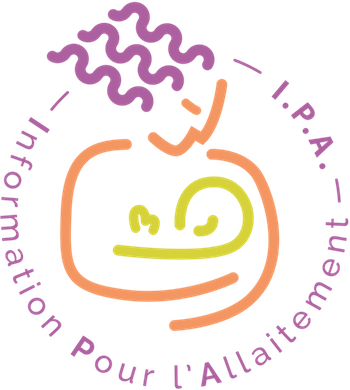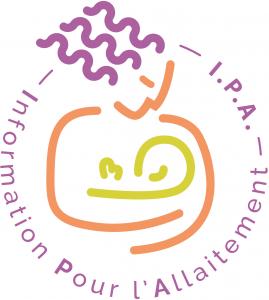Catégories
Documents disponibles dans cette catégorie (137)
Article : texte imprimé
Breastfeeding Exposure, Attitudes, and Intentions of African American and Caucasian College Students
Background: African American mothers lag behind in breastfeeding initiation. Research is needed to gain an understanding of potential reasons for breastfeeding disparities. Research aim: This study explored breastfeeding exposure, attitudes[...]Article : texte imprimé
Harumi Reis-Reilly, Auteur ; Nikia Fuller-Sankofa, Auteur ; Calondra Tibbs, Auteur |To improve equity in breastfeeding rates and eliminate breastfeeding disparities, the Centers for Disease Control and Prevention, Division of Nutrition, Physical Activity, and Obesity in 2014 funded the National Association of County and City He[...]Article : texte imprimé
Sandra A. Banta-Wright, Auteur ; Nancy Press, Auteur ; Kathleen A. Knafl, Auteur |Objective: This study described the prevalence and duration of mothers' breastfeeding infants with phenylketonuria (PKU) and explored factors related to duration of breastfeeding as a surrogate for breastfeeding success. Subjects and Methods:[...]Article : texte imprimé
Sharon M. Karp, Auteur ; Abigail Howe-Heyman, Auteur ; Mary S. Dietrich, Auteur |Objective: This secondary analysis examined breastfeeding initiation rates and factors related to initiation in a sample of multiparous women with a history of a prior preterm birth. Subjects and Methods: Data for a subsample of women (n=130)[...]Article : texte imprimé
Nicole Yonke, Auteur ; Rebekah Maston, Auteur |Background: Women taking methadone or buprenorphine are encouraged to breastfeed if stable without polysubstance use. Research Aim: We aimed to determine the difference between stated intention to breastfeed prenatally in women taking metha[...]Article : texte imprimé
Heather L. Sipsma, Auteur ; Anna A. Divney, Auteur ; Urania Magriples, Auteur |Background: Rates of breastfeeding remain disproportionately low among young mothers in the United States. Although breastfeeding behavior may be most directly related to breastfeeding intention, little is known about breastfeeding intentions am[...]Article : texte imprimé
Zixin Lou, Auteur ; Guo Zeng, Auteur ; John G. Orme, Auteur |Background: Despite the high breastfeeding initiation rate in China (> 90%), the low exclusivity rate is of concern. Some traditional behaviors, combined with increasing popularity of infant formula, may negatively affect future breastfeeding [...]Article : texte imprimé
Shamini Ramoo, Auteur ; Tuyet Anh Trinh, Auteur ; Jane Elizabeth Hirst, Auteur |Background: The benefits of breastfeeding to both maternal and infant health are vast and widely known. The aim of this study was to elicit the rates of exclusive breastfeeding, early initiation of breastfeeding, and colostrum feeding and to det[...]Article : texte imprimé
Laura Lauria, Auteur ; Angela Spinelli, Auteur ; Marta Buoncristiano, Auteur ; Mauro Bucciarelli, Auteur ; Enrica Pizzi, Auteur |Background: In Italy, there is no widespread standardized national monitoring system for breastfeeding practices. Research aims: To estimate breastfeeding indicators according to World Health Organization recommendations and associated soci[...]Article : texte imprimé
Deborah Dumphy, Auteur ; Julie Thompson, Auteur ; Myra Clark, Auteur |Background: Breastfeeding is the gold standard nutrition for infants, and more than three-fourths of US mother–infant couplets initiate breastfeeding at birth. However, breastfeeding rates plummet after hospital discharge, when mother–infant co[...]Article : texte imprimé
Martha B. Kole-White, Auteur ; Laurie Griffin, Auteur ; Jia Jennifer Ding, Auteur |Objective: Breastfeeding is known to have a positive impact on maternal and neonatal health. Some have suggested that gestational diabetes mellitus (GDM) is associated with lower breastfeeding rates, but it is not known whether rates are further[...]Article : texte imprimé
No less important is the recognition that the basis of proper nutrition is exclusive breastfeeding for the first 6 months and continued breastfeeding plus quality complementary food for the next 1–2 years. As such, today it has become axiomatic [...]Article : texte imprimé
Doaa M. Abdel-Hady, Auteur ; Abdel-Hady El-Gilany, Auteur |Background: Calculating exclusive breastfeeding (EBF) rates based on the previous-day recall has been recommended by the World Health Organization to avoid the recall bias but it also may not accurately reflect the feeding pattern since birth an[...]Article : texte imprimé
Chao Chen, Auteur ; Ran-Chou Chen, Auteur ; Miauh-Shin Chen, Auteur |Key messages A national Mother–Baby Friendly Institute program inviting health care workers and maternal institutes to become involved in breastfeeding promotion and support was established in 2001. It was based on the Ten Steps to Successful B[...]Article : texte imprimé
Simonne S. Nouer, Auteur ; Julie L. Ware, Auteur ; Katherine M. Baldwin, Auteur |Background: The Southern United States has low breastfeeding rates, particularly among African Americans. Breastfeeding rates are influenced by community attitudes and norms. Objective: This study aimed to examine changes in breastfeeding a[...]Article : texte imprimé
Gail C. Christopher, Auteur ; Joanne K. Krell, Auteur |We've seen the headlines in the media: “The Mommy Wars,” “A Woman's Right to Choose (Not to Breastfeed),” and “The Case Against Breastfeeding,” among others. These headlines are focused on the individual mother and the notion of choice, pitting [...]Article : texte imprimé
How can we encourage breastfeeding among our most vulnerable mothers and infants? Breastfeeding advocates have struggled with this question for decades. This issue of Breastfeeding Medicine contains three important articles that examine the issu[...]Article : texte imprimé
Ganga L. Srinivas, Auteur ; Mary Benson, Auteur ; Sarah Worley, Auteur |Background: Whereas breastfeeding initiation rates have risen in all groups throughout the country, rates of breastfeeding duration have changed more slowly. Peer counseling has had some success in sustaining breastfeeding, but with intensive p[...]Article : texte imprimé
Jennifer Riley, Auteur ; Sara Cherkerzian, Auteur ; Charis Benjamin, Auteur |Background: Pasteurized donor human milk (PDHM) supplementation for healthy infants is an emerging practice. Little is known about demographics or breastfeeding outcomes for dyads whose mothers choose PDHM versus formula. Research Aims: To id[...]Nouveauté
Article : texte imprimé
Juhee Kim, Auteur ; Rose Ann Mathai, Auteur |Background: The environment or setting to which an infant is exposed is crucial to establishing healthy eating habits and to preventing obesity. This study aimed to compare infant feeding practices and complementary food type between parent care[...]Article : texte imprimé
Sabrina Trigo, Auteur ; Kaitlin Gonzalez, Auteur ; Nicole Valiquette, Auteur |Background: Lactation is a normal postpartum physiological process that can continue in excess of 3 years and is often the sole nutritional source for infants in the first 6 months of life. Breastfeeding not only provides infant nutrition, but a[...]Article : texte imprimé
Genevieve Preer, Auteur ; Jessica M. Pisegna, Auteur ; John T. Cook, Auteur |Background and Objective: Until 2010, newborns at our institution were bathed in the nursery at approximately 2 hours of life. In May 2010, infant baths were delayed until at least 12 hours of life. Infants are now bathed in the hospital room wi[...]Article : texte imprimé
Article : texte imprimé
Christine D. Garner, Auteur ; Stephannie L. Ratcliff, Auteur ; Loralei L. Thornburg, Auteur |Background: Breastfeeding rates in the United States are suboptimal. Health professionals (HPs) have a unique opportunity to support breastfeeding because of the frequency and timing of their visits with mothers and infants as well as their call[...]Article : texte imprimé
Shimrit Keddem, Auteur ; Phyllis Solomon, Auteur |Background: Although breastfeeding is a major public health priority and provides numerous benefits, women veterans encounter many barriers to initiating and sustaining breastfeeding. Women veterans are a growing population with unique health c[...]




























